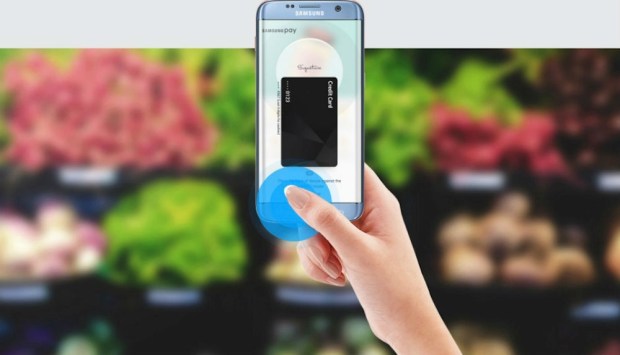Samsung Pay Wins The Race To Launch First In India

Yesterday (March 8), Samsung Pay went live and online in India, a push done in collaboration with five Indian banks: Axis, HDFC, ICICI, SBI, and Standard Chartered, and credit and debit cards from MasterCard and Visa. Most interestingly, however, is the non-traditional player that is supported by Samsung’s mobile payment entry — Paytm.
Unusual because some might consider Paytm a rival service for Samsung, with 200 million mobile accounts of its own. But Samsung has opted for collaboration — particularly in the rather rarefied situation that is the India market today.
India is not the only nation on Earth to push to go cashless, or at least cash lite, but they are doubtlessly winning the award for most aggressive effort at it. Prime Minister Narendra Modi announced in early November that the 100 and 500 rmb notes were being phased out — effective immediately. The net result was that around 85 percent of the country’s cash went out of circulation in a 60ish-day span.
The rollout has been rocky at best, but has also pushed cashless innovators to the forefront as Indian society attempts to learn just exactly how fast 1.3 billion people can go from cash-locked to digital.
Paytm has seen its users and transactions swell, and that rapid uptick in interest has been particularly strong among urban residents. In the last few weeks, the mobile landscape in India has also seen the launch of Bharat QR — an interoperable QR-based mobile payments scheme for use in store — built on the mVisa core spec and adopted by both RuPay and Mastercard.
And now, Samsung Pay has joined the party.
“The timing of the launch is very good given the ‘shock’ to the cash economy following demonetization. It is much easier to get people to download and use the Samsung Pay feature,” said Santosh Rao, head of research at Manhattan Venture Research. “India’s digital payments market is expected to reach $500 billion by 2020 on the backs of 1.2 billion mobile subscribers, which makes it a compelling opportunity to tap into.”
Tapping into a massive opportunity is always good news — and so Samsung’s announcement was met with its share of cheers.
The news was met with a lot of cheers for Samsung — and a surprising number of condolences for Apple. Apple has been pushing to expand Apple Pay into India for almost a year. In a May 2016 interview with NDTV while in India last year, Tim Cook was pretty unambiguous on the subject.
“In terms of Apple Pay, we’re looking at what to do there. We want to bring Apple Pay to India. We met with some of the banks to understand their perspective on mobile payments… I’ve been very encouraged with what I’ve heard,” Cook said.
However encouraged Apple may have been, however, Samsung Pay has managed to beat them to the mobile pay punch in India. Some of Apple’s issues may be with accessibility of its products in the Indian market, as Apple Pay only works on late edition iPhones with Touch ID — a consumer good that is priced out of most Indian consumers’ range. When asked if perhaps Apple might pursue a different pricing strategy in the Indian market, given Android’s relative dominance at a lower price — Cook was also pretty unambiguous.
“I don’t want to be in those markets. I want the consumer in India to buy at a price that looks like the U.S. price.”
That might limit how many consumers can actually access Apple Pay in India — should that launch happen.
And it is worth noting that Samsung may have a similar issue — Samsung Pay in India only works with Galaxy S7 and S7 edge, Galaxy Note 5, Galaxy S6 Edge+, Galaxy A5 and Galaxy A7 phone models — some of the spendier editions of the phone. Compare that to Paytm alone, which will work with almost any smartphone — or Bharat QR, which is eventually intended to work with old fashioned feature phones.
Along with the announcement that Samsung Pay is also coming soon to Sweden, this brings the total number of countries Samsung Pay is available in to 13. That still trails Apple Pay, but not by all that much — with the addition of Ireland earlier this week, that total is up to 14. And then there is the often overlooked Alipay, which also been aggressively expanding in Europe, Southeast Asia and the United States — with 450 million users (mostly in China).
Of course, Alipay doesn’t consider itself a competitor to these services, as its president of international operations, Sabrina Peng, told CNBC earlier this year.
“Merchants are not crying for another payment solution. What they want is more business. We are not a payment service, we are more than payments. Payment is very critical part of the circle, it is not the only part of the circle,” Peng noted.
Also part of the Alipay circle? Paytm — both Alibaba and Alipay are massive investors.
